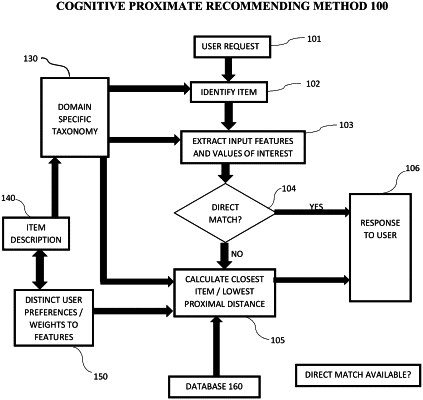| CPC G06F 16/24578 (2019.01) [G06F 16/2455 (2019.01); G06N 5/022 (2013.01)] | 7 Claims |

|
1. A cognitive proximate recommendation method including a database, the cognitive proximate recommendation method comprising:
first extracting a requested feature and a requested value of the requested feature for a requested item;
defining a proximal model of items depending upon the requested feature and cognitive entity phrasing maps for each attribute of the requested item according to the requested feature resulting in a null response; and
returning a return item from a plurality of return items stored in the database and returning a ranked list of the plurality of return items to replace the requested item based on the proximal model providing a closest item having a smallest proximal distance from the requested feature that resulted in the null response;
sorting the plurality of return items based on a learned weight from a user selection of the return item from the ranked list for each of the first extracted plurality of requested features; and
removing return items from the ranked list based on a filtering constraint associated with a user condition,
wherein the ranked list further includes inter-relationships that are defined by defining a primary value of each of the requested items and the return feature corresponding to the requested feature for each of the requested items and the return feature corresponding to the requested feature,
further comprising:
based on another null response to the return item of the plurality of return items, continuously querying the database until a non-null response is received to repeatedly execute the return of another return item from the ranked list of the plurality of return items having a proximal distance from the requested feature within a threshold value; and
based on the return of the another return item, updating the learned weight from the user selection of the return item from the ranked list.
|